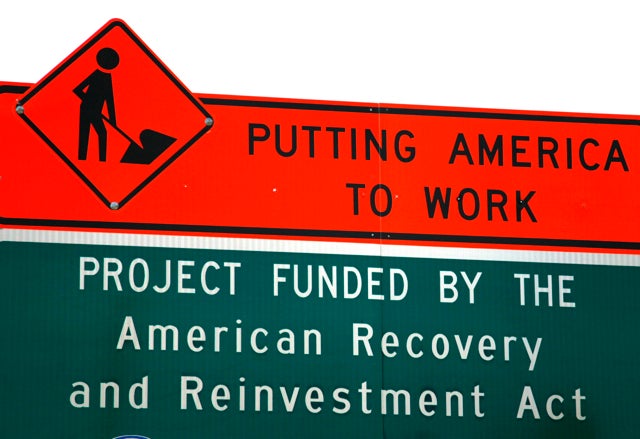Americans Don’t Need More of Obama’s Stimulus Spending
Nicolas Vega /
In a series of campaign-style speeches, President Obama has laid out recycled economic proposals, which include yet another tax increase to pay for $50 billion in new infrastructure stimulus spending. This after Washington already spent $70.6 billion under the American Recovery and Reinvestment Act in 2009. The trouble is that Washington can’t afford more spending.
The President’s latest tax-and-spend proposals also ignore the effects of that first stimulus. Setting that embarrassing lack of “shovel-ready” jobs aside, researchers at the Mercatus Center at George Mason University found that “stimulus dollars created more job shifting than actual new jobs.” Economist Garett Jones reported that as a result of the stimulus, “less than half of the workers came from the unemployment line, and instead were hired away from other firms and businesses.”
A case in point is the first “shovel-ready” project funded by the stimulus: the resurfacing of Route 650 in Maryland. Instead of creating new jobs, however, the stimulus money Maryland received was used to pay for the salaries of full-time employees.
Maryland Governor Martin O’Malley (D) cut the state’s infrastructure budget because of the $771 million gained in stimulus funds. He also raided the state’s Transportation Trust Fund, which is intended to pay for highway repairs, diverting $861 million over three years to help balance the state budget. According to Reason, “[E]ven with the stimulus, [Maryland] state spending on transit infrastructure has seen a net decrease of $90 million since 2009.”
The situation in Maryland was repeated across the country: “Stimulus dollars were used to cover general expenses rather than activating idle resources.” Here are some examples:
- Red tape delays fire station construction. Though the city of San Antonio was set to fully fund the construction of two new fire stations with its own money and had already hired a private contractor, the construction was delayed when the city received federal stimulus funds, increasing the cost of construction by $7.3 million. After the federal government got involved, the city found itself unexpectedly navigating complicated and expensive federal regulations, requiring environmental and historical considerations—all delaying the project significantly. The private builder lost its contract, laying off employees in the process.
- New buses without riders. The Winter Haven Area Transit Authority (WHAT) in Florida purchased five new buses using $2.4 million in federal stimulus funds. The new buses were additions to a transit system that serves an average of two to three riders per hour, according to WHAT. Polk County commissioner Randy Wilkinson observed that WHAT spends more on the bus service than if the agency hired a cab for each rider.
- The Gig to Nowhere. The Electric Power Board (EPB) received $111.6 million in federal stimulus funds for a local smart grid in Chattanooga, Tennessee, that was supposed to increase energy efficiency and help avoid power outages. It was built with fiber optics instead of more cost-effective wireless technology. The Times Free Press notes that “this decision was supposed to allow EPB to provide the fastest Internet service in the Western Hemisphere, a gigabit-per-second Internet speed that would send tech companies and web entrepreneurs stampeding to Chattanooga in droves.” Instead, the Times reports that “companies hoping to utilize the Gig to Nowhere are quoted monthly billing costs that make the service unfeasible. As a result…[a]lmost no economic development whatsoever has resulted from the gig.”
Stimulus spending—whether on education, manufacturing, or, in this case, infrastructure—did not result in overall economic growth. It only worsened budget deficits and removed resources from the private sector in the near term. Obama Administration approval of the Keystone XL pipeline is one way the federal government could help the economy. However, the types of projects funded by the 2009 stimulus bill and that Obama now proposes to fund are state and local responsibilities.
Nicolas Vega is currently a member of the Young Leaders Program at The Heritage Foundation.

